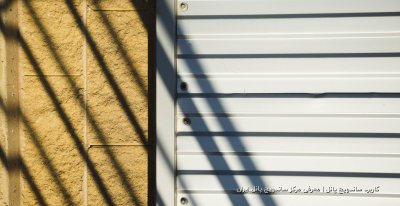ببین من یک آموزش برایت آماده کرده ام اگه زبانت خوب باشه به راحتی متوجه قضیه میشی . البته این آموزشی روی یک فایل از قبل تعریف شده کار کرده که در اینجا اصلا مهم نیست روی چه فایلی کار شده است که شما می تونید روی فایل دیگر این کار را انجام دهید .
Rendering an Animation
There are some specific techniques to learn for rendering your animation into a movie file. You can render directly to a movie format such as AVI, or you can render a sequence of still image files to files formats such as TGA and then use the RAM Player to save them into a movie. The latter method is the recommended choice. It's a few steps more than rendering directly into a movie, but it gives you more control over file size and quality of output, plus if you have frames with artifacts or other errors, you can repair or remove them.
Warning: The next lesson will take a long time to render. Depending on the speed of your PC, it can take several hours or more to actually render the individual frames.
Set up the scene:
� From the \tutorials\full_house directory, open full_house_walkin_start_render.max.
This is a large file, so it will take a while to load. Be patient, this file has stored all the radiosity rendering information, so the render times will be quicker for you.
This file is similar to the one created in the earlier walkthrough lesson. It has been reduced from 730 frames to 257 frames to shorten your rendering time.
Render to an image sequence:
1. Activate the Camera viewport, if it isn't already active.
2. From the Rendering menu, choose Render.
Now you will define the animation range.
3. In the Time Output group, turn on Range if it isn't already on. Set the Range to be from 0 to 257.
4. In the Render Output group, click the Files button.
The Render Output File selector appears.
5. Navigate to a directory where you want to save your work. You can use the Create New Folder button to establish a new location, if necessary.
Warning: Make sure you don't choose a directory on a CD drive or some other write-protected location. Also make sure you choose a location with lots of free space.
Now you need to define the type of still image file you will render.
6. In the Save As Type field, click the drop-down arrow and choose Targa Image File, (.tga).
This is a high-quality file type, good for this kind of rendering.
If you use a file name that ends with four numerical digits, the software will recognize you are rendering a sequence of still image files.
7. In the File name field. type my_walkin0000.tga, then click Save.
Make sure Save File is turned on in the Render Output rollout.
8. Make sure the Viewport field at the bottom of the Rendering dialog reads Camera03 (not Top, Front, or Left), then click Render.
The Rendering dialog appears. Wait for a short while as the first frame is rendered. You will see the Last Frame Time, Elapsed Time, and Time Remaining values change after the first frame finishes.
9. Allow at least four frames to render.
10. At this point, you can go away and return once your rendering is complete.
11. When the rendering is finished, you will see the names of 258 files there.
Convert an image sequence into a movie:
1. From the Rendering menu, choose RAM Player.
The RAM Player loads still image sequences into memory and plays them so you can watch them as a movie. It actually lets you load two different sequences and then compare them visually, but you won't use that functionality here. You'll simply use the RAM Player to save the files into an AVI file.
2. On the RAM Player toolbar, click Open Channel A.
3. In the Open File Channel A dialog, navigate to the sequence of TGA image files. Highlight the name of the first file in the sequence, then turn on Sequence, and click Open.
Now the RAM Player will load the sequential image files, rather than just the first one.
The Image File List dialog appears. Here you can use the Nth and Multiplier fields if you need to speed up or slow down your animation. If your animation is too slow, change Nth to 2 or 3. If your animation is too fast, increase the Multiplier.
4. Click OK.
The RAM Player Configuration dialog appears. Here you can observe and adjust your memory usage. Loading this sequence takes about 57 MB. There are also tools here to resize your animation, specify a range of frames to use, and split the alpha (transparency) information into a separate file.
5. Increase the Memory Usage to its maximum for your system, then press OK.
The RAM Player loads the file into memory. In the Loading dialog, observe how much memory is being used and remains available.
If it looks like you are about to run out memory, choose Stop Loading. If you have a low-memory system, reduce the number of frames you are loading and try again.
6. On the RAM Player toolbar, click the Play button and watch the movie playing.
7. On the RAM Player toolbar, click the Save Channel A button.
A file selector appears.
8. Choose AVI as the file type, and give the animation the name my_walkin.avi.
The Video Compression dialog appears. Here, you can choose a codec (compression/decompression type) and adjust the quality of the file. To reduce file size, lower the quality.
9. When the file conversion is finished, close the RAM Player, and then from the File menu, choose View Image File. Play your finished AVI file and observe the results.










